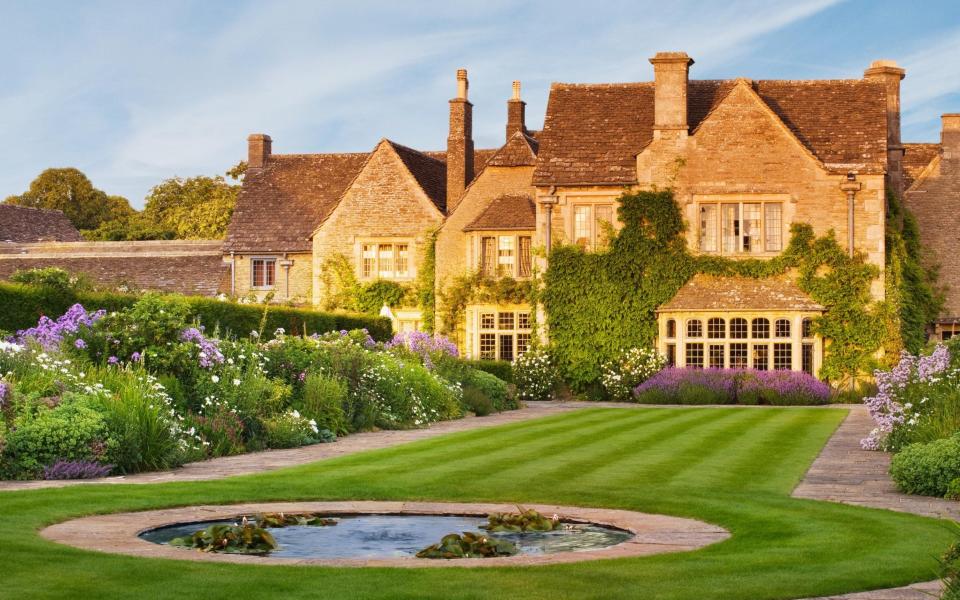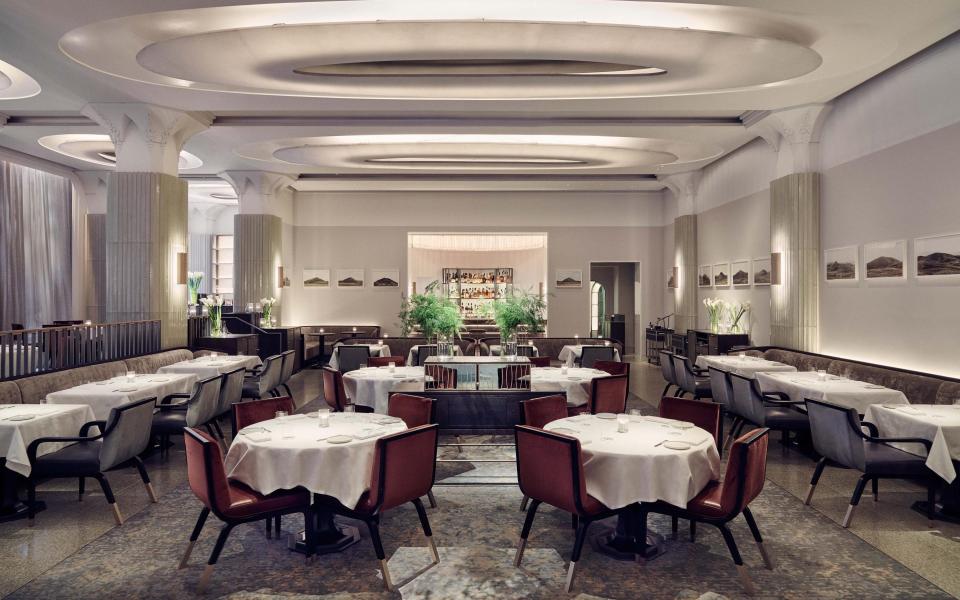Why dressing up to experience Britain's finest restaurants will be a staple of post-lockdown life

Hospitality has been one of the industries hit hardest by coronavirus restrictions, but restaurants are finally gearing up for reopening. After a year of home deliveries and meal kits, ‘makeaways’ and pre-made cocktails – plus a brief four months of adjusting to the new normal – how will luxury dining look post lockdown? Here, Michelin-starred chefs and restaurateurs give an advance taste of what we’ve been missing.
Luxury on a plate
“People want to get dressed up and experience the very best that life has to offer,” says Ollie Dabbous, chef patron of Hide on Piccadilly. “They are going to prioritise eating out over other less experiential luxuries and will want a more premium experience.”

Leonid Shutov, the owner of Bob Bob Ricard in Soho and the City, has replaced all of the restaurant’s tabletop ‘press for Champagne’ buttons with brass versions in anticipation of a fizz bonanza. Shutov’s reservations book is bulging with notes about delayed anniversaries, 50th birthday celebrations and even repeat marriage proposals and he has doubled his orders of champagne (Krug and Dom Pérignon especially), truffles and caviar to meet the pent-up demand.

Expect to see more British seafood, too, as chefs support the ailing UK fishing industry. Chef Anthony Demetre is luxeing up his menus at Wild Honey in St James’ with crab, langoustine, scallops and razor clams, while Michelin-starred City fish restaurant Angler is going all out in its championing of high-end native produce.
“The last year has been really hard for restaurants, but it’s been even harder for suppliers - the fishermen, the mushroom pickers, the strawberry growers,” says executive chef Gary Foulkes. “I want to showcase all the amazing produce that you can’t find in shops and make it a real celebration of the work our suppliers do.”
Less is more
Doing more with less might be the favourite mantra of HR managers but while kitchens reopen in the short term with fewer staff and customers, it is a guiding principle for some of the capital’s menus, too.

A. Wong re-opens in Pimlico this month with a mere five tables outside; those diners lucky enough to bag one of the most exclusive two Michelin-starred bookings in town can look forward to a 10-course lunchtime dim sum menu (£75) and an 18-course ‘Taste of China’ signature menu (£130). The à la carte will be reinstated when the restaurant reopens fully in May.

“A friend told me, ‘whatever you do, you need to ensure that you’re not offering guests a mediocre memory of how things used to be, but giving people new memories,” explains chef patron Andrew Wong. “We want to ensure that guests who come to see us in April get the best of what we have to offer in terms of food, storytelling and hospitality.”
David Moore of Charlotte Street veteran Pied à Terre has likewise slimmed down his offering, to omnivore and vegan tasting menus of six to ten courses (£65-99), while a smaller kitchen brigade means that off-menu requests cannot be accommodated for the time being. The quality of ingredients, however, is even better than ever as there is nothing left in the fridge at the end of each day. “I believe that, overall, customers will come away with an improved experience and think, that was slightly better than I remember,” Moore says.
Serving you right
Less is more applies to service, too. At Pied à Terre, laying out all the cutlery at the beginning of the meal means fewer interruptions for diners, but more time for staff to talk when needed. Moore anticipates that the greater informality will be welcomed by diners. Sue Williams, the general manager of Whatley Manor in Wiltshire, agrees that, post Covid, diners no longer want what she calls “stuffy, tug-of-the-forelock service,” but instead crave simple human interaction.

Informal, however, doesn’t mean that staff can be any less on the ball. “We will be reading the table even more than usual,” says Anneka Brooks, general manager at Davies and Brook at Claridge's. “Masks and spacing are very obvious things but really being aware of how the guest feels is crucial: feeling when someone may be more nervous than another table, knowing from the body language that a guest may need more space.”

What’s more, there is no chance of diners being taken for granted by restaurants relieved to have survived the past 12 months. “It is our job to make our customers feel special after the hell they’ve been going through,” says Claude Bosi of two-Michelin-starred Bibendum in Chelsea. “It is not just about the food. We are here to help our customers forget about the past year for the time they are in our dining room.”
Designs for life
Covid’s presence, however, will be inescapable throughout the country’s dining rooms, from the clear plastic screens, one-way systems and temperature checks on arrival to the masks on the faces of staff and the hand sanitisers on the table. “But we want to minimise the visibility of this so the evening feels like a return to normality of sorts: something social rather than clinical,” says Ollie Dabbous.

Don’t expect too many drastic changes to how a restaurant looks, however, says Simon Rawlings, the creative director of David Collins Studio, which has been responsible for the design of iconic London restaurants such as The Wolseley.
“We have private residential clients who want air filtration, toxin-free paints and sustainable timber to be used in the design of their homes,” he says. “Whether that is the future of commercial hospitality spaces remains to be seen. Whilst health is the new luxury, such a commitment comes with a cost and at the moment restaurants will be looking at their bottom lines more than ever.”
Immersive experiences
While restaurants might look much as they did when they reopened after the first lockdown, behind the scenes there has been a huge effort to make special occasion dining feel even more special.

James Close, head chef and owner of the Raby Hunt in County Durham, has spent the past year refining the presentation of his food to engage senses that have felt under constant assault from the stresses of Covid. “We’ve imported wood from Japan to make a sushi board for our chutoro nigiri,” he says. “We’ve taken into account how much people have missed travel and the first five courses of our tasting menu will have a global feel.” Elsewhere, expect dishes inspired by New York pastrami, Mexican tacos and Peruvian Nikkei cuisine.
Sue Williams of fellow Michelin two-star Whatley Manor agrees that the past 12 months have left diners craving a greater immersion in the dining experience. “Our guests want an ‘experiential stay’,” she says. “When they book for The Dining Room, the dinner starts in the lounge then moves through the kitchen then to the table, having engagement all along the way, with food, drink and friendly but professional staff.”
Ultimately, however, it is the aspects of the restaurant experience that never change that diners have missed the most. “Luxury means different things to different people,” says Isaac McHale, chef and owner of The Clove Club in Shoreditch. “To me, it means being looked after, charmed, talked to, smiled at and made to feel great.”
There are some things that we will never lose a taste for.
Sign up for the Telegraph Luxury newsletter for your weekly dose of exquisite taste and expert opinion.

 Yahoo Finance
Yahoo Finance 